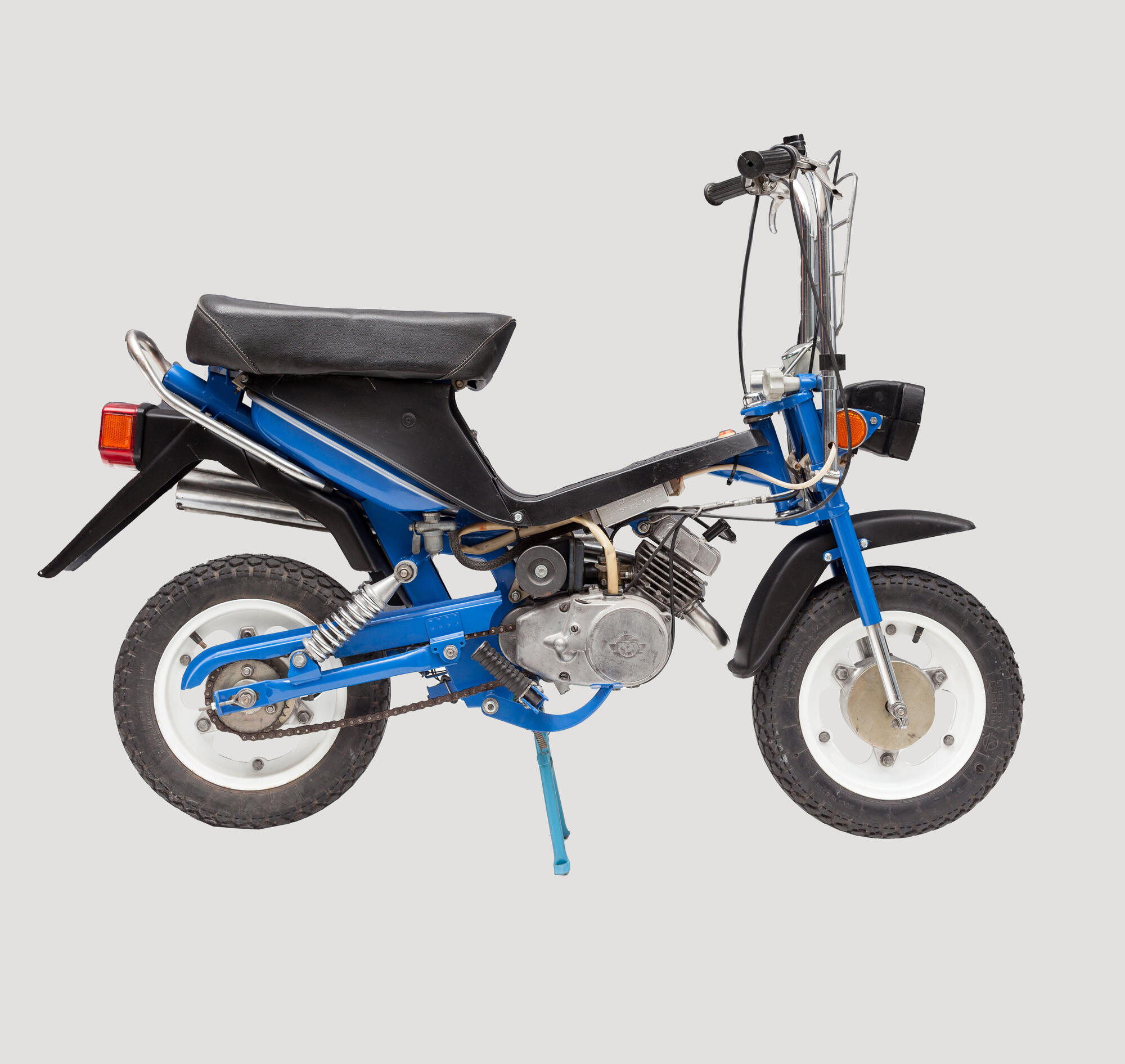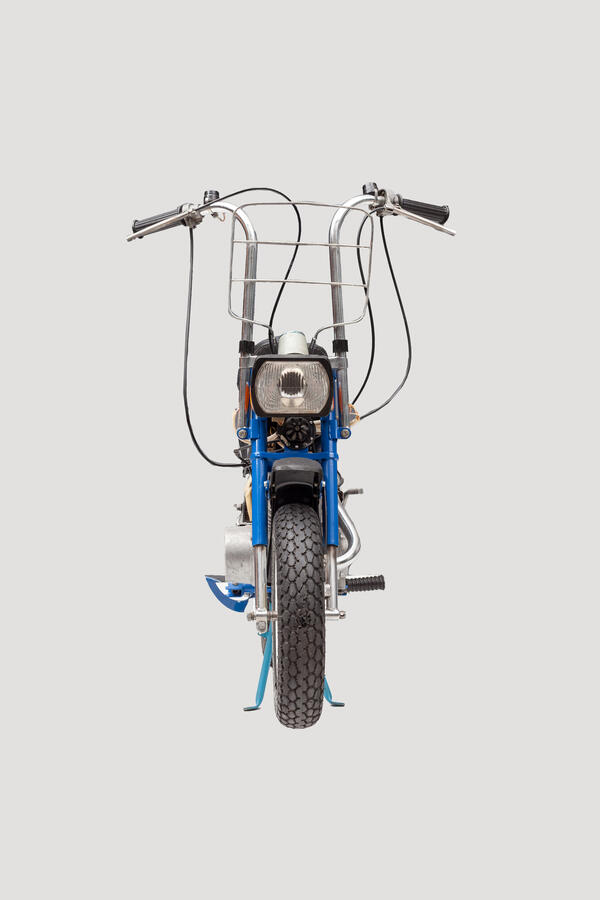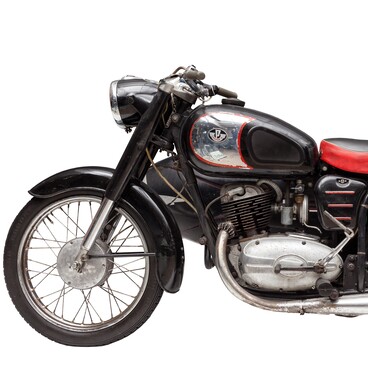In July 1987, the Sarkanā Zvaigzne Factory in Riga signed a manufacturing cooperation agreement with ZVL-Kolarovo, the producer of the Babetta mopeds. The collaboration between the two factories resulted in the new small mokick known as the Stella, meaning “the star”. The engine was produced in Czechoslovakia and all the other components — in the Soviet Union.
The prototype was presented at the Soviet Exhibition of Achievements of the National Economy in 1988. The Stella moped has an interesting origin story. Once, a representative of the Czechoslovakian trade organization “Motokov” in the Soviet Union decided to buy the Riga Mini mopeds for his children. However, the Sarkanā Zvaigzne designers confided that the engines they were supplied for the mopeds were far from perfect. This resulted in the idea to replace the standard engine with the Jawa M-225 that was used in the Babetta moped and had a two-speed automatic transmission.
It was a single-cylinder, two-stroke, horizontally opposed engine. With a cylinder diameter of 39 mm, it had a displacement capacity of 49 cc. The engine used a mix of gasoline (with an octane rating of 90) and oil in a 33 to 1 ratio. It could reach a power of 2.4 hp or 1.75 kW at 5,000 rpm.
The Stella moped had a dry weight of 45 kg and consumed approximately 1.7 liters of fuel mixture per 100 kilometers. It could reach a maximum speed of 40 km/h which was typical of contemporary Latvian mopeds.
The production of the moped was launched in 1988. In January, the “Za Rulyom” (Behind the Wheel) magazine reported, “The first rally dedicated to the 70th anniversary of the Great October Socialist Revolution was held last October. Nine various mopeds of the Riga and Lviv motorcycle factories and the ZVL plant in Kolarovo covered a distance of 2,000 kilometers from Bratislava to Riga. Having ridden on mountain and dirt roads, asphalt and cobblestone pavement, highways and streets, all the mopeds have proved their strength, durability, and trouble-free operation.” The journalists also commented that two Stella mopeds had also passed the test successfully.
The mokick was designed for one person and a cargo of up to 15 kg. Between 1990 and 1997, it was considered one of the most stylish and advanced mass-produced mopeds. The Stella was produced by the Latvian factory until the mid-1990s.
The prototype was presented at the Soviet Exhibition of Achievements of the National Economy in 1988. The Stella moped has an interesting origin story. Once, a representative of the Czechoslovakian trade organization “Motokov” in the Soviet Union decided to buy the Riga Mini mopeds for his children. However, the Sarkanā Zvaigzne designers confided that the engines they were supplied for the mopeds were far from perfect. This resulted in the idea to replace the standard engine with the Jawa M-225 that was used in the Babetta moped and had a two-speed automatic transmission.
It was a single-cylinder, two-stroke, horizontally opposed engine. With a cylinder diameter of 39 mm, it had a displacement capacity of 49 cc. The engine used a mix of gasoline (with an octane rating of 90) and oil in a 33 to 1 ratio. It could reach a power of 2.4 hp or 1.75 kW at 5,000 rpm.
The Stella moped had a dry weight of 45 kg and consumed approximately 1.7 liters of fuel mixture per 100 kilometers. It could reach a maximum speed of 40 km/h which was typical of contemporary Latvian mopeds.
The production of the moped was launched in 1988. In January, the “Za Rulyom” (Behind the Wheel) magazine reported, “The first rally dedicated to the 70th anniversary of the Great October Socialist Revolution was held last October. Nine various mopeds of the Riga and Lviv motorcycle factories and the ZVL plant in Kolarovo covered a distance of 2,000 kilometers from Bratislava to Riga. Having ridden on mountain and dirt roads, asphalt and cobblestone pavement, highways and streets, all the mopeds have proved their strength, durability, and trouble-free operation.” The journalists also commented that two Stella mopeds had also passed the test successfully.
The mokick was designed for one person and a cargo of up to 15 kg. Between 1990 and 1997, it was considered one of the most stylish and advanced mass-produced mopeds. The Stella was produced by the Latvian factory until the mid-1990s.




